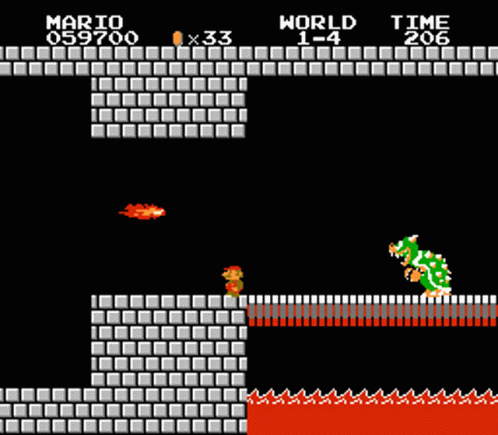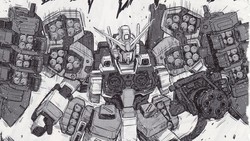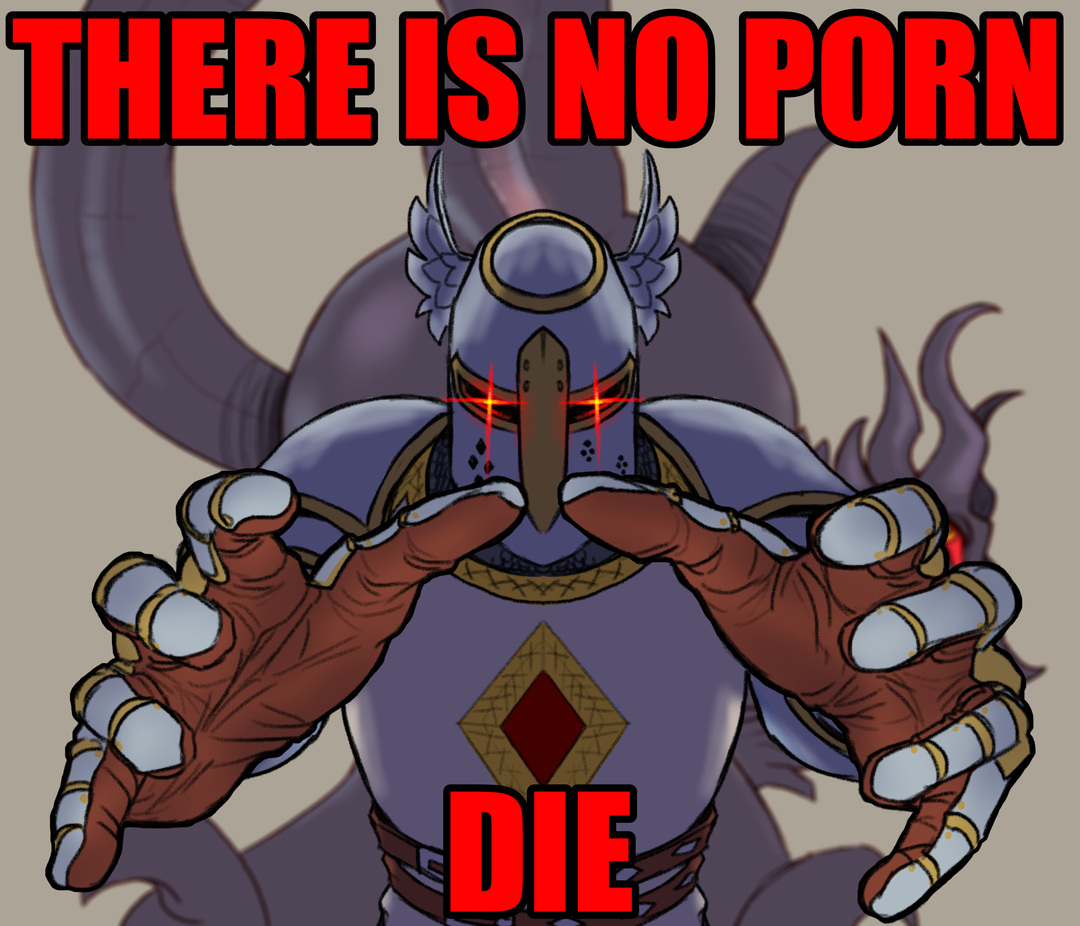I noticed that pretty much all games I played in my life have been released after 1990. So now I’m asking those with earlier experience here:
Which games can you recommend from before that time?
But: they should still be fun in their own right and not just interesting to play in an historian sense of trying to understand how genres developed.
Games I played that are older than 1990:
- Tetris (classic for a reason)
- Pacman (interesting but simple)
- Prince of Persia (was too young to understand how to correctly play this game, I should maybe try to play it again)
- The Legend of Zelda (too old school and clunky for my liking)
First thought was shadowrun on the genesis but the internet says that is 1994 which is really giving me a mandella effect as I really feel it was before that but I mean the genesis came out in 89 and im sure I did not get it till it had a price reduction. So we are talking original master system and nintendo and what limited stuff was on pc including commodores. Maybe wolfenstein and man there was a game based on an manga or anime that was pretty advanced for the time and another were I just remember uncle smoke. gah. reading through I second castelvania. I think shinobi and double dragon (sorta have to play two player to get the full effect)
Tbh I’ve tried and most of those games are quite boring aside from exceptions like Mario which are kinda playable. Pretty much all games from that era have a problem in that they don’t respect your time at all and they’re frustrating as hell to play (limited or zero saves, lots of backtracking etc, stuff like that).
Most games from that era were arcade games or designed from an arcade mindset. They are designed to extract the maximum number of quarters from kids pockets as possible.
Megaman 2 and 3. Super Mario Bros 1-3, Metroid (get a map), Zelda.
They already said that Legend of Zelda was “too old-school and clunky” for them, so it’s a good bet they’ll hate these, too.
What do they expect? Pong is fairly smooth lmfao.
I guess one person’s “clunky” is another person’s “crisp”. You want precise, pixel-perfect controls for games that hard.
can’t remember WHEN it came out, might have been 89 might have been 90 but Batman The Videogame for the NES (the first batman game)
absolutely fantastic game, amazing soundtrack, easily one of the best Batman games ever.
(the first batman game)
Sorry to nitpick but there were several Batman games before that. The first one that I know of was Batman (1986), an isometric exploration game on 8-bit micros. It’s a very good game for its time and the engine later evolved into Head Over Heels (1987) which uses a different theme.
Meant the first one on the NES.
Sunsoft was on a bit of a roll there. The same composer did the soundtrack for Journey to Silius AKA Raf World. They made simulated instrument sounds from the CPU’s sound channels in an different way from everybody else… listen to those games, Gimmick!, and Hebereke.
I recently watched this video comparing various Midi game soundtracks on different sound cards. Really interesting how different cards interpreted the sounds differently.
The game is great up until that bullshit last level. That clocktower level was brutal and then you have to fight two overtuned bosses in a row.
Had a SEGA, the batman videogame fucking ruled, probably still does. I can picture that game so vividly. Still remember celebrating with my brother when he beat it 🙂
So yeah, seconding your recommendation for sure.
1000% this game had amazing music. For a system that had only a couple of pulse waves, a sine wave, a white noise channel and a sampler channel using an algorithm that was already over 30 years old in 1983 some games really got an amazing amount of expression out of them. I’ve always felt that this game’s soundtrack was criminally underrated.
Populous, Peter Molyneux.
And (1990) Wing Commander, although I’d guess that you have at least played the sequels.
Wasteland. There’s a HD version on PC that plays nice with modern systems. No I ain’t talking about the weird remake.
For my money, Robotron 2084 and Smash TV are still the best 2 twin-stick shooters of all-time. Recently, we’ve had games like Assault Android Cactus+ and Nex Machina come close, but the OGs are still untouchable, IMO.
Pasted thread into my list of gaming suggestion requests from other communities over at !videogamesuggestions@lemmy.zip, trying to be the Fediverse version of r/gamingsuggestions. Great question!
Here are some greatly-known ones, primarily in arcades:
- Galaga. The ultimate refinement of early shmup design - before this there was Gorf, Galaxian and Space Invaders, all of which had good ideas but less happening for long term play. After this the genre took a turn towards scrolling games where more production values could be thrown at you. You can play Galplus or the other direct sequels, but it’s more like different takes than improvement.
- Robotron 2084. Same thing as Galaga but for twin stick games which had a bit of ancestry in “characters moving and shooting” games like Berserk before Robotron, but didn’t have it put together into the recognizable twin-stick scenario. The entire genre tries to glue more stuff onto the Robotron template, but it already has what is essential.
- Lode Runner, Boulder Dash. These are pioneers in “action puzzles on a grid with characters and level design”, a genre of puzzle game which is hard to imagine not having now, and is essentially timeless. These two were directly preceded by “Space Panic” and “The Pit” in arcades, respectively, but it was on the home computers that these games found their refined and playable form.
- Sokoban. Sokoban, like Lode Runner and Boulder Dash, is a character puzzle on a grid, but with no arcade elements. Also timeless, though newer takes on Sokoban all add undo and other conveniences. Also worth mentioning with Sokoban is Pitman, which is like a turn-based Lode Runner. It had a nice visual update on Gameboy as “Catrap”. (Early Gameboy releases are a reliable source of old games that people still craved a port of after 1989)
- Outrun. It’s a simple arcade racer. Other games like Pole Position or Buggy Boy could substitute. But aesthetically speaking, the game is The One Everyone Remembers, definitely aged in its sprite graphics and FM sound but still a compelling vision of “driving into the sunset with your girlfriend”, with no extra gimmicks like its 2000’s sequel.
- Zork. A difficulty of exploring the adventure gaming genre is in how quickly it consolidated itself into genre tropes that emphasize niche forms of challenge. Zork, being one of the first entries in adventures, manages to keep it simple enough: there’s a fantasy world to explore and puzzles and some random chance elements. The vocabulary is limited but doesn’t strive to get in your way.
- Ultima 4. Roleplaying is probably the genre that is hardest to make recommendations for since it’s gone through so many fashion trends. I pick this particular one as opposed to any other in the series because it hits a nice balance of conveying a unique roleplaying world and quest style(follow an ethical code to become an Avatar) versus being a simple and playable experience. Ultima never emphasized combat or grind although it has a little bit of that going on, which makes it unique among most 80’s RPGs since the easiest way to pad out these games is to add punishing grinds and gotchas. Earlier Ultima entries are just simple(3 in particular still quite playable), later ones become more burdened by worldbuilding(5 is still worth trying if you want a challenging, sometimes confusing quest). The NES version, though not “authentic” to how the original Apple II game looks and feels, is probably the most accessible port of it. All the Ultima games rely on basic conventions of the genre during this period: write down all the dialogue for hints, make maps of each location. The puzzles are loosely structured and can be sequence broken by knowing what keywords to type or where to search.
And some lesser-known ones:
- Bill Williams’ Alley Cat and Salmon Run. Two arcade games that engage with the lives of the titular animals. Relatively simple but creative and fun to play every time.
- Xagon. An arcade game for the Atari computers styled after the more popular arcade hit Q-Bert, this game uses hexagons instead of cubes and its sense of graphic design still works perfectly.
- The Return of Heracles. The approach to role playing in this game is really noteworthy since it figures things like a kind of board game - there is a lot of RNG, a lot of puzzle solutions that will get your character killed, forcing a new one to take their place - and you are expected to roll with it. When people say 80’s games had teeth this is a good example of it. That might sound bad, but it’s the same kind of tangible risk that made battle royale games blow up in the 2010’s.
- Journey to the Planets. This is a game played because it is hyper abstract in the ways that only early 80’s games were - the scale of objects, the vague representationality, the flashing colors and strange noises that only Ataris could do. The sense of raw experiment shines through this game, and while you’ll probably become frustrated and give up very quickly, it’s about the look and feel. Zelda came along and made things boring.
- Alternate Reality: The Dungeon. This was a high-minded, overambitious roleplaying project that got to its second game before giving up because of publisher issues. What’s special about it? The depth of simulation, mainly. The first game, the City, had weather effects, diseases, alignment, reputation and seasons, but it was a kind of prelude to the Bethesda-style open world in that there were few explicit goals. The Dungeon added in a traditional questline chain, and explored the worldbuilding (a “kidnapped by aliens, forced to participate in a fantasy simulation” premise) in much more depth. If you are going to play one first person dungeon crawler from this period, this is the one I’d go with. It shows its age, but the atmosphere remains striking and unique. One of the first major encounters in the game is your doppleganger, who mirrors your own stats. You can get sick with the “Crystal Death” which makes you stronger but slower until you freeze. If your inventory is full, “The Devourer” will arrive to reclaim memory by consuming your items. The game has big ideas conveyed in a simple way, and the interface only has a few things that take effort to learn: you can get down to the business of grinding, mapmaking, hint collecting and puzzle solving pretty quickly.
- Project Firestart. This is one of those games that occasionally appears on lists of predecessors to modern survival horror. It’s a very fully realized, cinematic take on how to do the genre, despite being stuck in side view and requiring disk swapping to move around the sci-fi, alien-infested ship. It was made for the wrong machine, TBH - it would have blown away a lot of people on Amiga or Genesis. The C64 graphics make it a little weaker aesthetically than it could have been. But I wouldn’t call it obtuse or unplayable at all.
I remember playing Galaga during the loading screen for Tekken…
Thanks for taking the time to describe each game, it makes it much easier to decide if a game is up my alley!
I have to see how to play them on a modern system, but if they are fan favourites, those surely ported them to modern systems.
Galaga is great! Also I remember Defender 2 on the NES
Galaga is pretty amazing
Unrelated Image for fun, Blessed Are the Meek
I don’t know if you’re a woman or not but I will tell you that random ass picture in the thread is annoying as fuck.
Ive seen it a few times today. Much more of it and ill get to test out the block feature.
Under His Eye
Unrelated Image for fun, Blessed Are the Meek
I’ve seen someone else mention these, but I have to recommend them as well:
Maniac Mansion (1987). It’s the first SCUMM (Script Creation Utility for Maniac Mansion) engine game that all its successors use (Indy 3 & 4, Monkey Island, Sam and Max Hit The Road, etc). Really hard game play from what I can remember, and it has a sequel too, Day of the Tentacle (1993), which is absolutely hilarious.
Laser Squad (1988) was among my favourites growing up, they are the precursor to UFO/XCOM (the original from 1993).
Elite (1984), a technological marvel for its time. It’s still playable today, and if you liked any of the other space exploration / trader / miner games (E:D, Star Citizen, X4, Freelancer, etc) you will love this.
King’s Bounty (1990). I could have sworn this was from earlier. No matter. It’s the precursor to Heroes of Might and Magic. Has less balancing than its successors and can get really whacky.
Spy vs Spy (1984). Really fun split screen couch pvp. You set traps in a house with doors everywhere in various places that you hope your opponent will forget about while also hunting the other one and beating each other in a brawl. It can get hilariously complex. But needs another player as there’s no AI from what I can recall.
Creatures (1990). It’s a platformer where you control a cute bear trying to rescue other cute bears from evil potatoes and mushrooms and birds. And that’s where the cuteness ends. Every platformer level finishes in a so called torture level where the cute beat to be rescued undergoes some crazy mutilation by chainsaw, sharks, acid. Has a sequel, Creatures II (1992) and a spin-off (kinda), Mayhem in Monsterland (1993).
Summer Camp (1990). Another platformer, story driven with fun mini games. Has a sequel, Winter Camp (1992).
Laser Squad (1988) was among my favourites growing up, they are the precursor to UFO/XCOM (the original from 1993).
I will add Rebelstar (1986) on the ZX Spectrum, the granddaddy of them all. Technically there was Rebelstar Raiders beforehand but that version didn’t have a computer opponent. I feel that Rebelstar is where the design elements that defined the later games came together.
Maniac Mansion is a fucking classic. So good.
Spy vs Spy does have an “ai” for single player.
Zork (1980), and Nethack (1987) are fun adventures.
I highly recommend NetHack. My first ascension on NAO is probably my most memorable gaming experience ever.
Any Infocom game, for that matter. Zork II and Hitchhiker’s Guide to the Galaxy were fun, too.
I’d also suggest the granddaddy of interactive fiction games: Adventure / Advent / Colossal Cave. I actually still have the map I made around here somewhere.
That brings memories. I also had fun with old school muds
ive been playing a port of the original rogue (which nethack is based on) and its pretty fun too
Mike Tyson’s Punch-Out!! is one of the greatest games ever. It’s a boxing game that relies heavily on reflex and rhythm, and it plays so smoothly you’ll be surprised it’s an NES game.
Mega Man 2 is a classic. Most people claim this or Mega Man 3 (1990) as their favorite. Just some great action platforming, if you like to jump and shoot.
Speaking of jumping and shooting, Contra is another insanely fluid game. I really think its gameplay holds up well compared to even SNES-era games, and its vibrant, high-contrast colors are seared into my brain.
Most great NES games are some type of platformer, honestly. Castlevania is no exception. With a gothic horror aesthetic and a killer soundtrack, it’s honestly one of my favorites to just kick back and play with a drink.
I would also recommend the original Super Mario Bros., if you really haven’t played it. It’s pretty good for an early outing.
Oh and, as a rule, NES games are hard. Arcades made you pay quarters for lives, and since games were $50+ they wanted you to get your money’s worth in restarts. You would do well to learn the Konami code.

(Bonus points if you can hear the music even though it’s a gif)

(Bonus points if you can hear the sound effects)

(If you know the Konami code without looking it up, it’s time to schedule an exam of your naughty bits)

(Bonus points if you’ve ever managed to make it anywhere in this game without a game guide)

(No idea what Mario is doing)
NES Contra is spot on for controls. Just picking it up for the first time, it’s so responsive and the movement feels good pretty much immediately. The arcade version of the game had weird jumping movement that feels clunky, but the NES version just feels so much better. It’s also not as hard as its reputation makes it out to be.
Absolutely. Contra may be the easiest on this list. But Contra with just 3 lives…
I’ve definitely played through the game multiple times in a row on just those three lives. You gain more lives at certain score levels anyway. If you play through the entire game without dying, you’ll have around 10 lives left. And if you sit through the credits, the game continues from the beginning, only it gets harder after every loop. After 4 or 5 consecutive runs, the basic enemies that usually just run and jump actually start shooting at you.
I’ve gotta be talking to Bill Rizer’s alt account right now.
You’re making me want to break out Contra and get as practiced as you.
Really hot take here: Super Mario Bros (you didn’t mention it in your list).
For a game from the '80s on the limited hardware available at the time, they really put a lot of work into the mechanics of the platforming. It’s an incredibly responsive game compared to its contemporaries.
Legend of Zelda along the same lines. I remember how cool it was that it could save progress without constant power. Caveat is… It’s so hard without a guide or a lot of trial and error.
You are right, I never did play the first proper Mario game. Will check it out!
The true first Mario game is Mario Bros. (the arcade game). Or maybe Donkey Kong if you’re a stickler.
Prince of Persia, 1989.
This game pioneered rotoscope animation and directly influenced the Tomb raider series in many ways:
- Crumbling slabs that you fall through
- spikes that kill you if you fall on them, but you can walk through them
- Clanging jaws that will chop you in half
- the re-cycling of multi-tier map design, when one big room with many levels becomes a central atrium to which you return many times, just sometimes higher or lower than you were before. Also a very clever use of limited memory resources.
- A random doppleganger encounter that hurts you when you hurt it.
- block-based jump physics with standing, running, and vertical jumping
- hanging from ledges as a mechanic
- little known fact about prince of Persia but if you holster your sword and hold X and T while drawing your sword, the player draws a pair of uzis instead
Be aware that the game requires you to memorize the level layouts, including multiple completely blind jumps.
It’s still a great game, bit I thought it’d mention this because it may frustrate players trying it out.
Oh and you have to beat it in under an hour or you automatically lose.
That was a fun mechanic. Fun, fun, fun.
- Hero’s Quest: So You Want to Be a Hero
Quest for Glory II- Duke Nukem
- Adventure
- Sim City
- Lode Runner
- The Oregon Trail
- Boulder Dash
- Where in the World is Carmen Sandiego?









